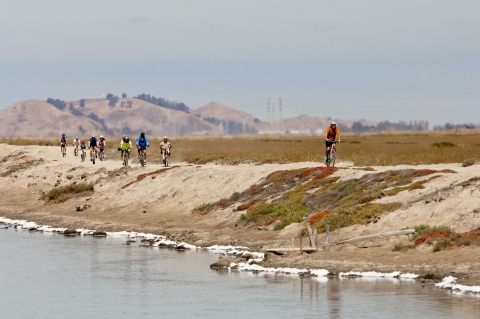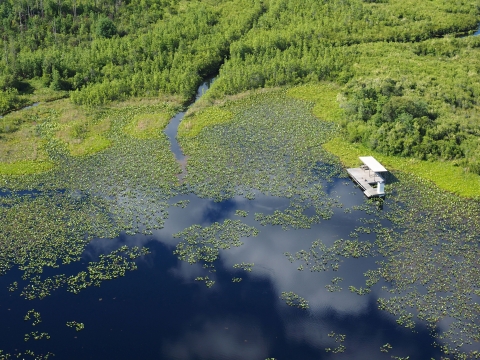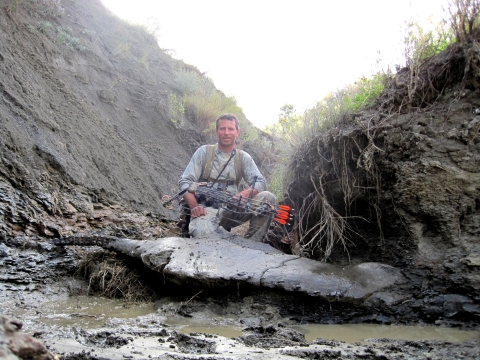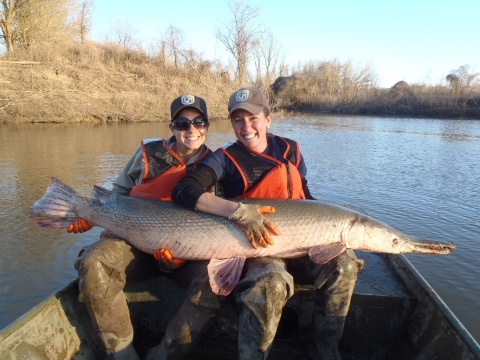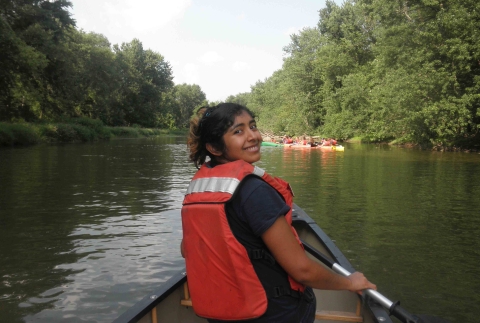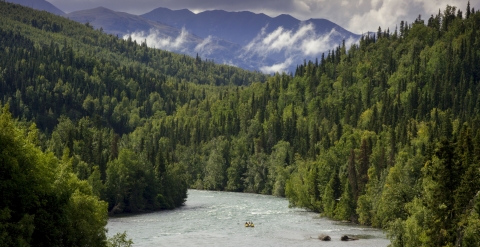If you’ve done any exploring of rivers and trails on national wildlife refuges, you know how rich, fun and varied the experience can be.
But did you know refuge land and water trails also boast some odd, quirky distinctions? Consider these.
Get Moving
On what refuges can you ...
Cycle around strangely colored ponds?
Salt ponds undergoing restoration along the Mallard Slough Trail at Don Edwards San Francisco Bay National Wildlife Refuge can look pink, blue-green or yellow, depending on salt level.
Camp in North America’s largest intact blackwater swamp?
Okefenokee National Wildlife Refuge in Georgia claims that distinction. You can paddle water trails into forested wilderness and camp on platforms above bellowing alligators.
Go for a rock scramble or hike a slot canyon?
Charon’s Garden Trail is a popular rock scramble at Wichita Mountains Wildlife Refuge in Oklahoma. It’s 4.8 miles out and back. San Lorenzo Canyon is a slot canyon trail at Sevilleta National Wildlife Refuge in New Mexico.
Go Back in Time
On what refuges can you ...
- Imagine what it was like to head west in a covered wagon?
The Lombard Ferry crossing at Seedskadee National Wildlife Refuge in Wyoming sits at the juncture of four historic trails: the Oregon Trail, the Pony Express Trail, the Mormon Trail and the California Trail. You might even see wagon wheel ruts in the ground.
- Roam lands rich with the remains of some of the earth’s most fearsome prehistoric creatures?
Charles M. Russell National Wildlife Refuge in Montana is renowned as a dinosaur fossil site. The discovery in 2010 of a prehistoric sea creature called a plesiosaur encased in 75-million-year-old dirt/rock excited paleontologists. It’s illegal to collect rocks and fossils on public lands.
- Learn about indigenous culture?
At Pahranagat National Wildlife Refuge in Nevada, the Visitor Center Trail pays homage to the Nuwuvi people, who have inhabited this Mojave Desert region continuously for thousands of years. Tribe members worked with refuge staff to design exhibits. At Ridgefield National Wildlife Refuge in Washington, the Cathlapotle Plankhouse is a faithful re-creation of a historic dwelling of the Chinook Indian Nation.
Look for Strange Creatures
On what refuges can you ... indulge a long-shot hope of seeing some odd-looking animals?
- Muskox. This hoofed mammal, found at Arctic National Wildlife Refuge in Alaska, gets its name from the odor males give off during the seasonal rut.
- Alligator gar. This large freshwater fish species, found at St. Catherine Creek National Wildlife Refuge in Mississippi, has been around more than 100 million years. Video
- Wolverine. This small bushy-tailed mammal is a reclusive hunter. You could spend many months trying to see one at, say, Red Rock Lakes National Wildlife Refuge in Montana or Kootenai National Wildlife Refuge in Idaho. NatGeo video.
Go Against the Flow
On what refuges can you ... challenge the usual rules?
- Paddling with the current at Wallkill River National Wildlife Refuge (pictured) in New York and New Jersey means heading north.
- When the earth shook. At what is now Reelfoot National Wildlife Refuge in Tennessee, New Madrid earthquakes in 1811 and 1812 reportedly caused the Mississippi River to flow backwards.
Go Big
On what refuges can you ... enjoy some of the longest water trail systems in the National Wildlife Refuge System?
Refuges with some of the lengthiest water trail systems include Kenai National Wildlife Refuge in Alaska (140 miles), Okefenokee National Wildlife Refuge in Georgia (120 miles) and Upper Mississippi River National Wildlife and Fish Refuge (96 miles).

